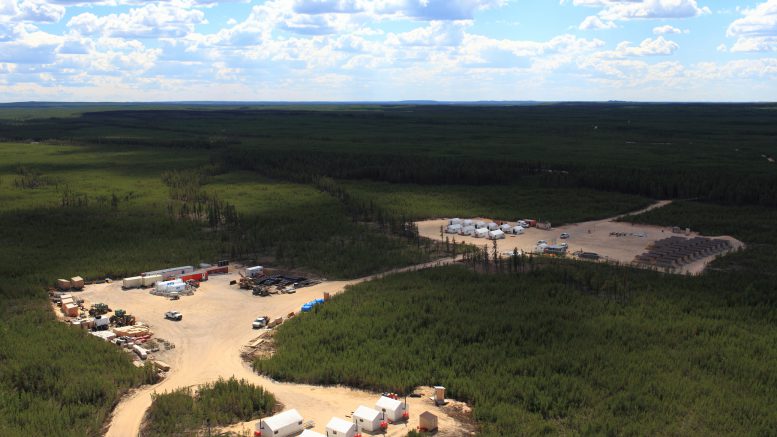The first six holes of Fission Uranium’s (TSX: FCU; US-OTC: FCUUF) resource upgrade drill program on one of the zones at its Patterson Lake South (PLS) project in northern Saskatchewan have intercepted wide swathes of mineralization.
Five of the holes drilled into the R1515W zone at PLS hit high-grade sections. Hole PLS24-659 cut 3.7 metres on which a scintillometer clocked gamma ray readings of more than 10,000 counts per second (cps), including 0.5 metres of more than 65,535 cps, Fission said in a Tuesday release. That hole intersected 66 metres of total composite mineralization over a 156.5-metre interval from 133.5 metres depth.
Hole PLS24-652 cut 62 metres of total composite mineral over a 99-metre interval from 145 metres downhole, with scintillometer readings of 33,300 cps over 7 metres.
Hole PLS24-653 cut 63 metres of total composite mineralization over a 99-metre interval from 139.5 metres depth, including 5.56 metres returning more than 10,000 cps and up to 28,900 cps.
“Our resource upgrade and growth program is off to a great start with a 100% hit rate and strong mineralization in all of our initial holes at the R1515W zone,” Fission president and CEO Ross McElroy said. “The zone is one of two that remain outside of our current mine plan and it is open for inclusion and expansion. Once the program is complete, we have the potential to add this zone to our mine plan increasing the overall mine reserves and thereby enhancing the production profile.”
Triple R-adjacent
Fission released a feasibility study for PLS, which includes its main Triple R deposit and is located along the southwest edge of the Athabasca Basin, almost 18 months ago. That study increased the potential underground mine’s life to 10 years from seven compared to a pre-feasibility study in 2019 and gave PLS a net present value of $1.2 billion. It forecasts production could start in 2029.
Federal reviews of the project are pending, and expected to be finished by the middle of next year.
The current drill program targets 5,830 metres across 19 holes at R1515W. The zone holds 67,000 indicated tonnes grading 1.15% uranium oxide (U3O8) for 1.7 million lb. U3O8 and 234,000 inferred tonnes at 0.96% U3O8 for 5 million lb. U3O8. Through closely spaced drilling, Fission intends to convert those inferred resources to indicated and potentially incorporate the R1515W data into the overall PLS mine plan and schedule.
Samples of the drill core will be split in half and sent to the laboratory for additional U3O8 assaying.
R1515W is just southwest of PLS’ main Triple R deposit that holds 3 million tonnes of probable reserves grading 1.41% U3O8 for 93.7 million lb. of U3O8, and 2.7 million indicated tonnes grading 1.94% U3O8 for 114.9 million lb. U3O8.
Shares in Fission were down 2.6% to $1.10 apiece on Tuesday morning, valuing the company at $917.9 million. Its shares traded in a 52-week range of 55¢ to $1.33.


Be the first to comment on "Fission’s drilling detects high gamma rays near Saskatchewan uranium site"